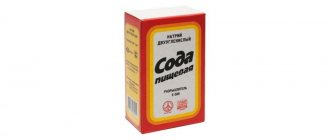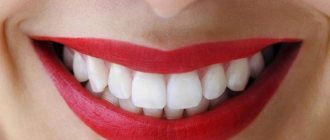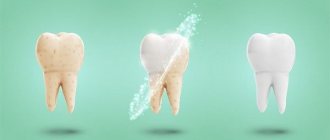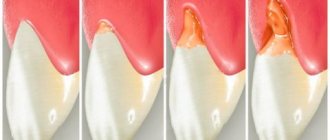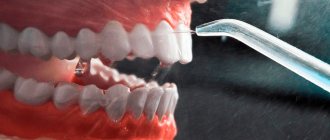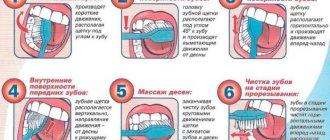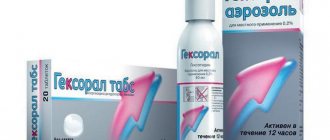One of the simplest, quite effective and at the same time cheap ways to whiten teeth at home is regular soda. However, you should use it no more than once a week.
By the way, soda is used not only to whiten teeth, but also to relieve inflammation of the gums and eliminate bad breath. To soothe the gums, mix soda with water to form a paste, apply to the inflamed areas of the gums and gently massage for several minutes.
To eliminate the unpleasant odor, dilute a teaspoon of soda in a glass (200 ml) of warm water and rinse the mouth.
As for whitening with soda, this procedure is quite simple, but you need to prepare for it.
How does baking soda affect teeth?
Soda is a good and inexpensive disinfectant. Even now, doctors recommend using it in dental treatment of infants who are diagnosed with stomatitis or oral thrush.
Soda kills fungus and promotes rapid healing of ulcers on the mucous membrane that appear as a result of stomatitis due to its high regenerative properties. In addition, sodium bicarbonate has a pronounced anti-inflammatory effect. Dentists often prescribe rinses or baths with soda or soda-saline solution for purulent periodontitis and pulpitis, after opening the cavity of the affected tooth.
In America, clinical observations of the oral health of patients using soda pastes for brushing their teeth and microbiological analyzes of the contents from the oral cavity of these patients showed that the concentration of pathogenic microorganisms is significantly reduced.
Whitening effect of brushing teeth with baking soda
As for hard tooth tissues, soda has a good whitening effect . The enamel is lightened by at least 0.5 shades, which can be compared with professional oral hygiene. This happens thanks to abrasive particles that efficiently clean the tooth surface from dental plaque and food debris. Conventionally, you can compare brushing your teeth with soda to cleaning various surfaces with sandpaper.
American scientists even conducted a study in 2008 that showed that pastes based on baking soda are much better at removing dental plaque than pastes with a soda-free composition or a low concentration.
It is necessary to take into account the fact that soda is a pure abrasive. Abrasive particles are found in many toothpastes, especially whitening ones. Dentists do not recommend using whitening toothpastes for longer than 2 weeks, because... abrasive particles can thin the enamel layer of the tooth, leading to hypersensitivity. For this reason, pure abrasive in the form of baking soda definitely cannot be used often . Dentists also do not recommend using soda in dry, undiluted form.
You also need to pay attention to the pH of the soda. It is equal to 8, which is typical for an alkaline environment. Many people are afraid of this indicator, but it is only dangerous for the protective barrier of the skin, which is manifested by redness around the mouth if soda pastes act on the skin for a long time. For the oral cavity, an alkaline environment, on the contrary, is positive, because it neutralizes acidity. It is high acidity that contributes to the destruction of hydroxyapatites in the enamel, which act as a kind of skeleton, thereby disrupting the structure of hard tissues and provoking the development of caries and its complications in the future.
Soda teeth whitening:
The benefits and harms of cleaning
Only baking soda is suitable for teeth!
The advantages of sodium bicarbonate pastes include:
- Achieving a positive result quickly, the enamel becomes lighter after the first procedure.
- Easy to prepare pasta and use it.
- Removal of all dental plaque.
- Low cost.
- Relief of unpleasant odor from the oral cavity.
- Relief of inflammatory processes in the oral cavity.
- Accelerated healing of wounds in the mouth.
- Neutralization of acidity in the mouth.
- Destruction of pathogenic microorganisms and fungi of the genus Candida that cause candidiasis (thrush).
There are also disadvantages :
- High abrasive properties. Frequent use of soda contributes to the thinning of the enamel layer and the development of the carious process in the future.
- Irritating effect on soft tissues in the form of red spots or rashes around the mouth.
- Risk of developing bleeding gums.
- The appearance of sensitivity to hot, cold and sour with frequent use of the soda bleaching procedure.
- The short duration of the achieved result.
Important! To prevent the development of these shortcomings, it is not recommended to use products with sodium bicarbonate more than once every 3-4 weeks.
Contraindications
This method has contraindications. It is not applicable for those who have:
- Increased sensitivity of teeth. The already thin layer of enamel from this procedure can be destroyed irreparably.
- Caries. Whitening ingredients, once in a carious cavity, increase its size.
- Gum diseases. Their condition may be aggravated by exposure to acid and alkali.
- Disturbed acid-base balance.
Before the whitening procedure, you need to familiarize yourself with these points. You should choose another whitening method if at least one of them is applicable to this case.
Indications for using soda
Soda must be used when the enamel darkens due to plaque formation
The main indication for using soda pastes when brushing teeth is darkening of the enamel.
The following factors contribute to darkening:
- Consumption of foods and drinks with food colorings.
- Smoking.
- Age.
- Poor oral hygiene.
Baking soda can combat these reasons.
But there are reasons that can only be eliminated by professional, internal tooth whitening. These include:
- Tooth injury.
- Consequences of endodontic treatment.
- Taking certain medications.
- Genetics.
In these cases, the darkening of the enamel begins from the inside, and superficial whitening methods will not give even minimal results.
Video experiment to identify the effect of soda and salt on teeth:
Opinions about the method
Baking soda, as the main ingredient in many dental whitening recipes, is used by many patients who do not want to go to the dental office. Moreover, there are much more positive reviews .
You can share your experience of using this substance to lighten enamel with other readers by leaving a comment on the article.
If you find an error, please select a piece of text and press Ctrl+Enter.
Tags at home teeth whitening recipes soda
Did you like the article? stay tuned
Previous article
How to strengthen gums at home: tips, recipes, recommendations
Next article
Recommendations for using the Waterpik WP 450 portable irrigator
Rules of application
To achieve white teeth without damaging the enamel layer of the tooth, you need to use sodium bicarbonate a maximum of once a month. In this case, you need to use it mixed with water, the consistency should be mushy. You can use any other solvent.
Attention! Do not use dry soda under any circumstances; it can leave scratches on the enamel layer.
This is what the paste should look like
In addition, dry soda powder feels like sand in the mouth, which causes discomfort. It is better to use the product in diluted form, mixing it with toothpaste or other substance.
There are several proven recipes for preparing homemade soda pastes and solutions, which will be discussed below.
The method of brushing your teeth can be standard, but it is better to use circular movements of the brush. This will not only clean the tooth surfaces, but also massage the gums, improving tissue trophism.
Is it possible to brush your teeth with baking soda every day?
Dentists have a negative attitude towards any abrasive products, therefore, from a professional point of view, daily brushing of teeth with soda is prohibited. It was already mentioned above that daily use leads to destructive processes in tooth tissue, but people still strive to achieve positive dynamics and consolidate this result for a long time.
Carefully! It is impossible to achieve a lasting result with whitening soda. Excessive efforts will lead to other dental problems that cannot be treated at home.
The effect after brushing teeth with soda does not last long, which explains the desire of patients to use this method of hygiene more often. However, daily use thins the enamel more and more. Dentin, which is much darker, begins to appear through the thin enamel layer.
As a result, the teeth become even darker than they were before and it will no longer be possible to achieve lightening at home. In addition, thin enamel easily allows waste products of pathogenic microflora, which are the source of the development of most dental diseases, to pass through it.
Dentist on brushing teeth with soda:
Is it possible to brush your child's teeth with baking soda?
It is better not to brush teeth with a milk bite with soda. There are several reasons for this:
- The enamel is already white and does not need bleaching.
- The enamel is not fully formed and is very porous, which can contribute to its rapid destruction.
Precautions for use
The negative impact on enamel can be minimized by following a few simple rules when using sodium bicarbonate to lighten teeth:
- It is advisable to be very careful when using this substance in large quantities in its pure form.
- After the procedure, you must rinse your mouth thoroughly with clean warm water.
- Immediately after bleaching, during the first hour, you should not take very hot or cold food and drinks, as well as foods that contain strong dyes.
- Procedures cannot be carried out daily for a long time.
Remember also that a properly chosen diet will help strengthen the enamel and saturate it with essential microelements. It is advisable to begin such strengthening a few weeks before the start of bleaching.
How to brush your teeth with soda
Before you start brushing your teeth with soda, you need to be completely sure that:
- The enamel is of sufficient thickness.
- The enamel is free of microcracks.
- There is no hypersensitivity.
- Darkening of the enamel layer is not associated with genetic factors, injury or medications.
Personal hygiene products used to clean dental surfaces with soda pastes:
- A toothbrush with soft bristles (some dentists recommend not using a brush at all, but replacing it with a bandage, a cotton swab, or simply using your index finger to brush).
- Toothpaste (non-whitening), water, lemon juice or hydrogen peroxide.
Cleaning technique:
- Combine baking soda with one of the ingredients: water, toothpaste or lemon juice until it becomes mushy.
- Place the mixture on the head of your toothbrush.
- Clean dental surfaces using circular movements, without much force.
- Duration of cleaning is up to 3 minutes (if water or toothpaste is used as a solvent), no more than 1 minute (if the solvent is lemon juice or hydrogen peroxide).
- Rinse your mouth vigorously with running water or a mint or herbal mouthwash to remove the unpleasant aftertaste.
Recipe options
The most popular recipes using soda are:
| Soda with lemon juice | There are recipes for paste and solution. To prepare the paste, you need to combine a teaspoon of sodium bicarbonate with the juice squeezed from fresh lemon. Add juice drop by drop until a paste consistency is reached. The paste copes with plaque much better than the solution. The rinsing method lightens the enamel slightly. To do this, the juice of one lemon is mixed with a teaspoon of baking soda. |
| Soda with toothpaste | To prepare the composition, you need to use equal amounts of toothpaste and soda, and the toothpaste should contain fluorides, which strengthen the enamel, and potassium nitrate, which reduces sensitivity. |
| Baking soda and hydrogen peroxide | To prepare the paste, you need to take 1 teaspoon of baking soda and ½ teaspoon of peroxide. |
Video about teeth whitening with baking soda and peroxide:
Homemade pastes with soda
- If there is a large amount of plaque covering more than half of the dental crowns, you can prepare a powerful paste. It consists of hydrogen peroxide, soda, salt and industrial toothpaste in equal parts.
Soda
Salt
Toothpaste
- If inflammation of the soft tissues of the oral cavity occurs frequently , you can use a homemade eucalyptus-based paste. The ingredients include warm olive oil (2 teaspoons), finely chopped and grated eucalyptus leaves (1 teaspoon), baking soda (1 teaspoon) and a teaspoon of fine salt.
Olive oil
Eucalyptus leaves Soda Salt
- If you are prone to developing tartar, you can prepare a paste with more aggressive abrasive particles. To prepare you will need 20 grams of soda, 45 grams of chalk, 50 grams of white clay and peppermint essential oil (10 drops).
Soda
Chalk
White clay
Peppermint essential oil
Write a comment
Tatiana
February 9, 2016 at 10:52 pm
Sodium bicarbonite is my favorite helper in everything at home, as it is relatively harmless. I didn’t use it for whitening, or rather I didn’t realize, but the whole family used it for cleaning teeth for a long time during the terrible hard times of the 90s, when everything simply disappeared from the shelves, including toothpaste. The condition of the teeth did not worsen, although they intuitively understood that there was no need to rub too much and be sure to rinse generously. After reading the article, I remembered its effectiveness and decided to mix dental mint powder with baking soda, apply the mixture to the teeth and leave for 5 minutes. Afterwards I brushed it a little and rinsed thoroughly. The result appeared immediately.
Alexandra
February 11, 2016 at 9:27 pm
Soda certainly gives its results. 2 years ago I dreamed of a snow-white smile, and without hesitation I went to the clinic. Since I have rather sensitive teeth, the attentive doctor did not impose whitening, so as not to further thin the enamel. At first I was a little upset, but after reading a lot of positive reviews, I decided to try home whitening with soda. The effect surprised me. My teeth became much whiter and didn’t hurt at all. So I recommend it to all readers who are still looking for their own method of solving this problem. Good luck!
Anna
June 2, 2016 at 7:54 am
Tooth powder is almost impossible to find on sale, which is a pity. I found it once in my life in a children's store, and never saw it again. At home I whiten my teeth with soda, because in dentists they do cleaning with it, also under pressure. So what's the difference? Moreover, pastes sometimes contain soda, so I think there will be no harm. I also tried to whiten with lemon, but my teeth became more sensitive to cold water.
Natalia
November 14, 2016 at 8:12 am
I tried many traditional methods in order to get a white-toothed smile. But all home methods (soda, activated carbon, peroxide, lemon juice, etc.) give only short-term insignificant results, and besides, the teeth become very sensitive. Several times a week I brush with toothpaste and baking soda to better remove plaque, but I still have to go to the dentist for whiteness.
Elena
May 16, 2022 at 12:05 pm
I personally tried to whiten my teeth at home. Namely soda. The result shocked me. In just a couple of uses, my teeth became a shade, or even two, whiter, and the yellowness from coffee disappeared. I used it this way: I poured a little baking soda on my brush and toothpaste and brushed it. This should be done no more than once a week, otherwise sensitivity will appear on the gums.
Olga
November 27, 2022 at 10:15 pm
Oh, it turns out there are simply a lot of options for such whitening. At one time I tried the Neumyvakin method. My teeth actually became a little whiter. But it became a little scary for the enamel and I put this method aside. I think I'll try again. But still, in my opinion, this method is good for removing plaque. No more.
Effect
The result of using a homemade paste based on sodium bicarbonate is noticeable after the first cleaning. The enamel is lightened by at least 0.5 tones. At the same time, soda can cope not only with soft plaque.
Before and after teeth whitening with baking soda
The paste also effectively removes pigmented plaque and tartar. However, the effect is short-lived . The enamel returns to its original shade after 2 – 3 days.
Video review of brushing teeth with soda:
How to minimize damage to enamel
You can brush your teeth with baking soda using your finger.
To reduce the risk of enamel damage, you should adhere to the following recommendations :
- Brush your teeth with baking soda no more than once a month.
- Use a soft-bristled toothbrush for cleaning, or better yet, a cotton swab, gauze, or simply brush your teeth with your finger.
- On other days, it is better to perform oral hygiene with therapeutic and prophylactic pastes containing useful minerals.
- If even a slight sensitivity appears from the procedure of brushing teeth with soda, it is better to refuse altogether.
Methods for whitening tooth enamel with soda
There are several ways to get rid of plaque using baking soda. The simplest is dry powder cleaning. It is necessary to apply a little powder and walk it over the entire surface of the teeth. You should not use a toothbrush for this; it is better to take a damp cotton pad. The result will be visible immediately - the enamel will become lighter.
Another way is to use a paste to which you need to add a little soda before cleaning. To do this, it is better to choose a fluoride-containing toothpaste that supports and restores tooth enamel. It is recommended to use a brush with soft bristles.
